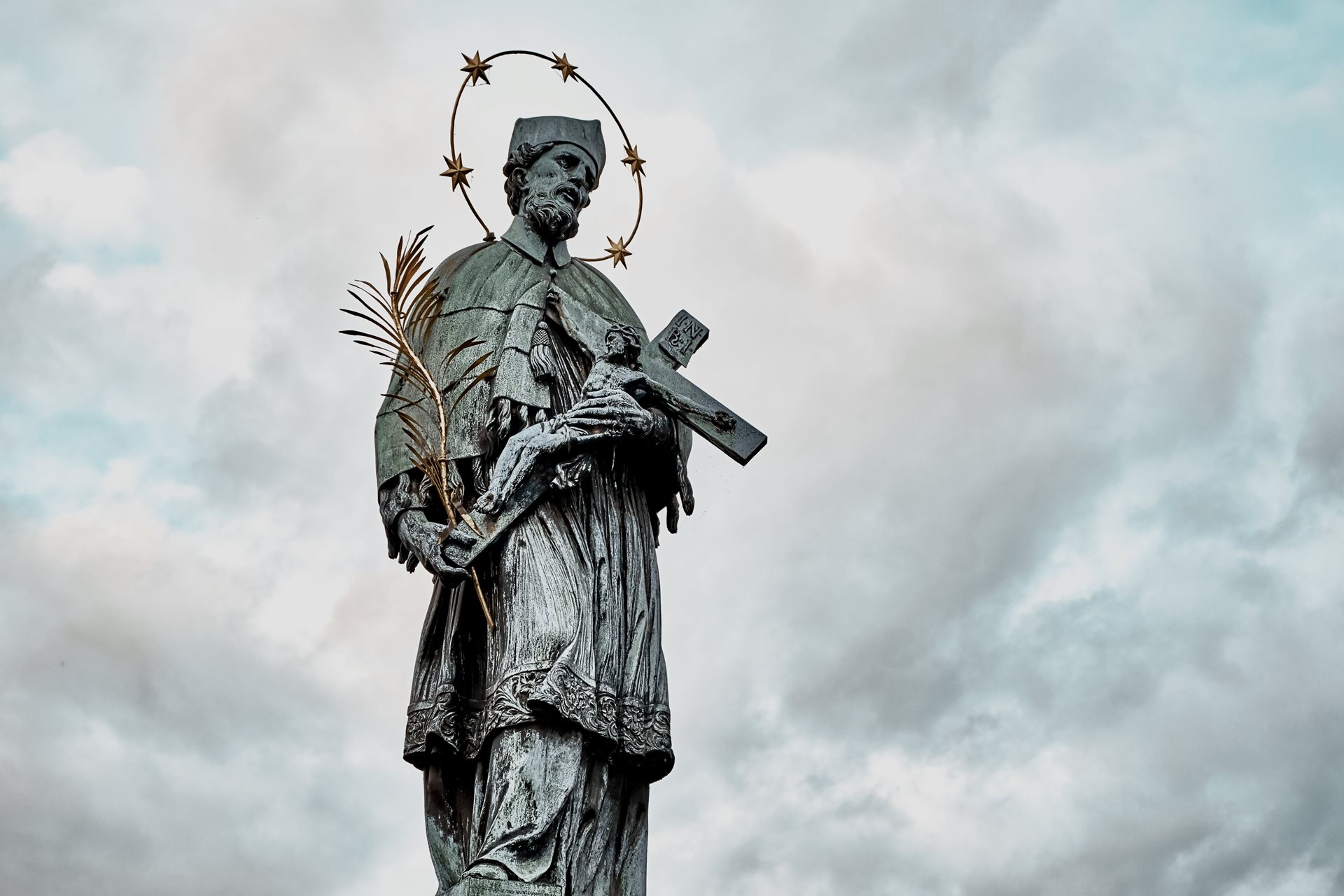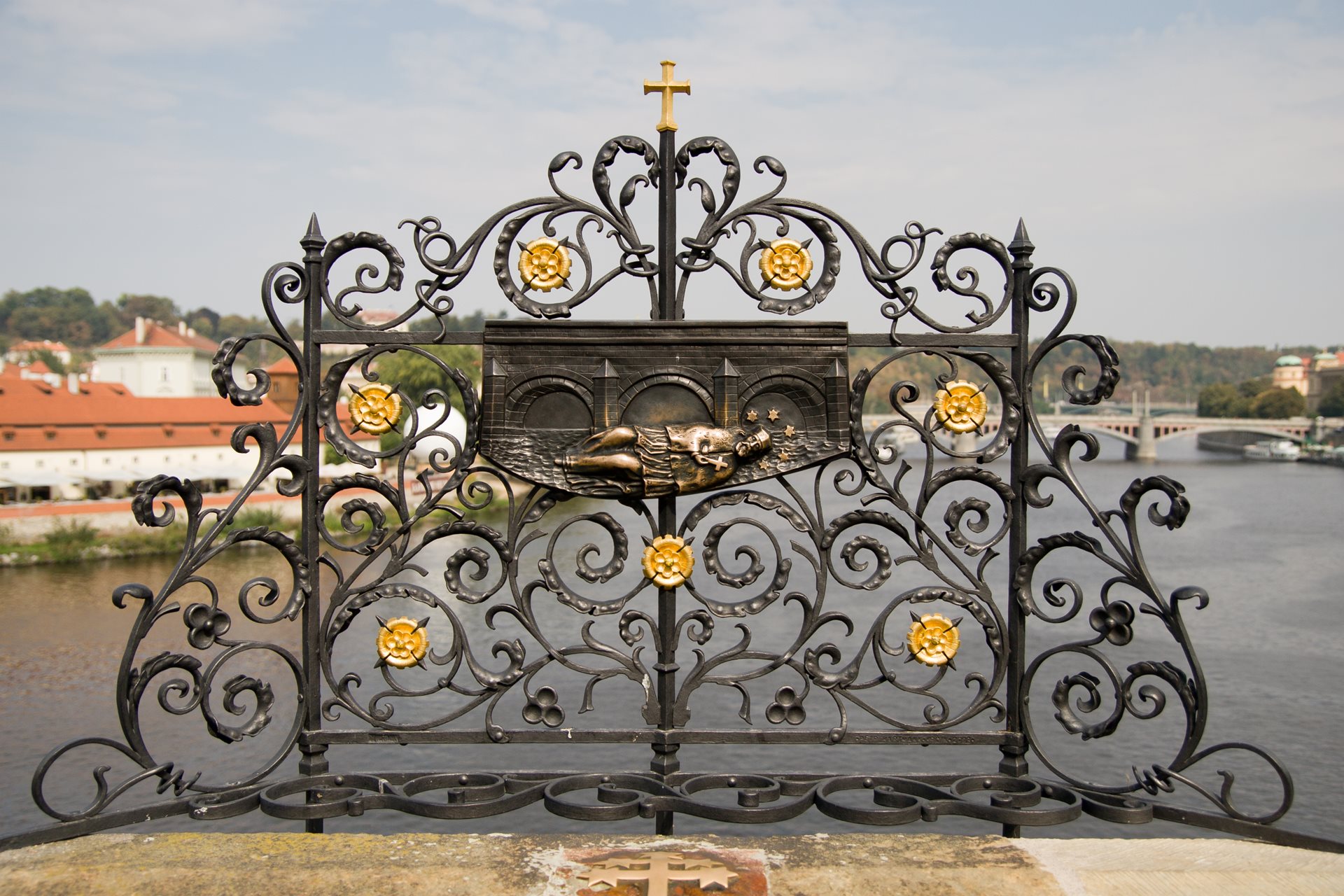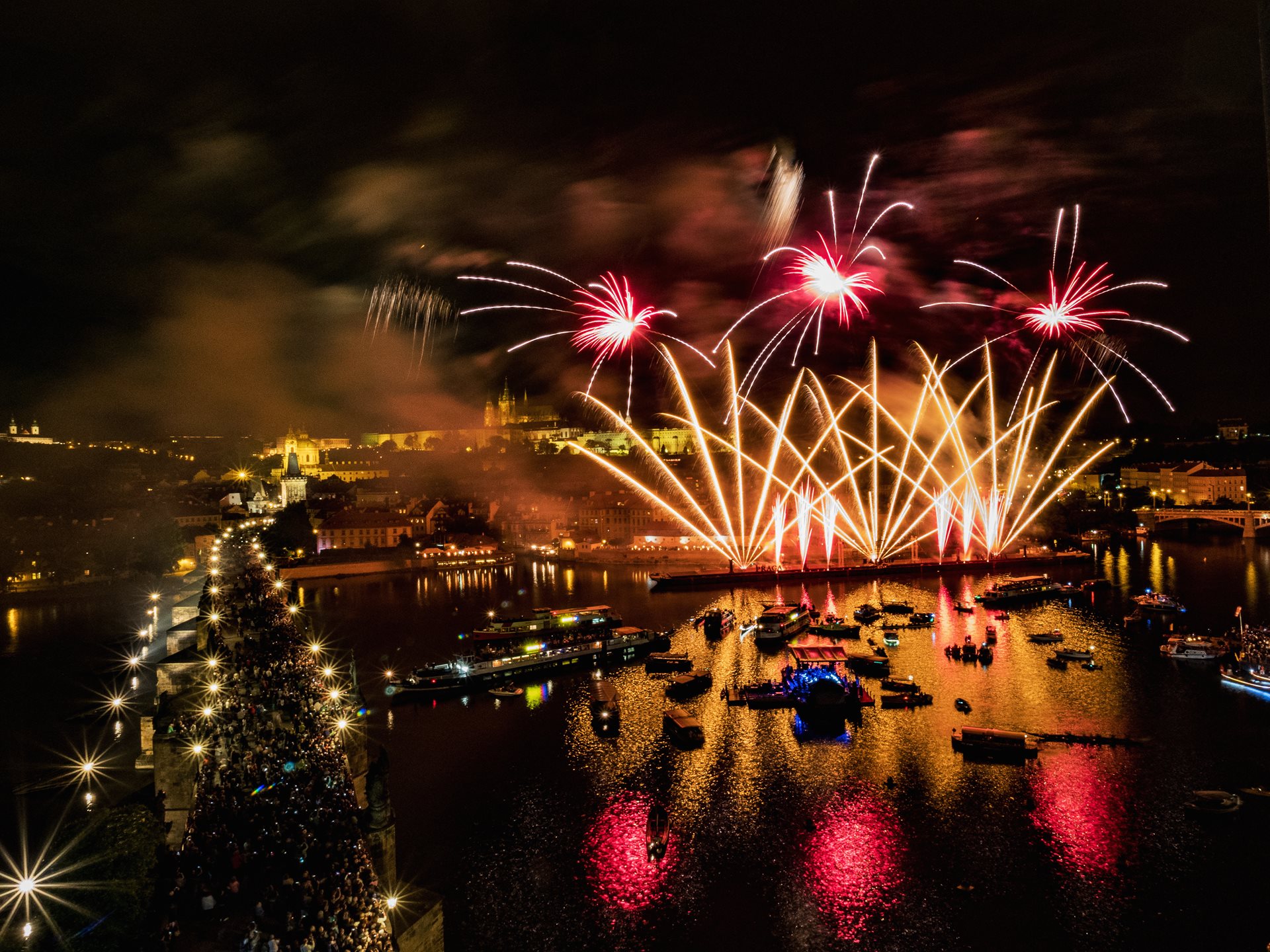Jan from Pomuk, Jan Nepomucký, Johánek. These are all names that are associated with one of the few Czech Roman Catholic saints. He was born in 1340 (or later) in western Bohemia and died on 20 March 1393 in Prague. He worked for the Archbishop of Prague and today is considered one of the Czech provincial patrons. It is more than 300 years since he became recognised as a saint. But who was he? And where can his legacy be seen?
The birthplace and youth of Jan Nepomucký
Jan was born sometime around 1340 in Pomuk, a town in western Bohemia not far from Pilsen. According to tradition, he was born in the place where the Baroque Church of St Jan Nepomucký stands today. At that time, a small house where Jan was born stood. His father was the local mayor, or administrator. Jan studied in a nearby monastery, then continued his education at the newly founded Prague University, now called Charles University, and at the University of Padua.
Jan’s career and death
Jan of Pomuk, as he was then called, worked as a notary, vicar, canon and lawyer. He took advantage of his education and slowly built a career. In 1389, he was appointed to the position of Vicar General of the Archbishop of Prague. It was the peak of his career because he was not from any aristocratic family, and at that time only people from selected aristocratic families held higher offices. At the same time, however, Jan found himself in an unenviable situation, as the Archbishop of Prague and the Czech King competed for power. Moreover, it was a very uncertain time full of religious wars, which eventually resulted in the pan-European reformation of the Catholic Church. The whole dispute between the king and the archbishop escalated in 1393, when Jan was arrested by the king at Prague Castle and tortured. The analysis of his bones in the 20th century confirmed that he had indeed died as a result of torture. His body was thrown into the Vltava River from Charles Bridge.
Legends of Jan Nepomucký and his sainthood
Jan was buried after his death, but various legends appeared in the chronicles about his martyrdom and alleged miracles he performed after his death, perhaps the most famous of which gave birth to legend approx. 100 years after his death. This revolved around the fact that Jan was the queen's confessor, and that his death was the result of him not wanting to reveal the queen's confessional secret to the king. However, the whole cult of Jan Nepomucký originated in the 17th century, when crosses by the roads were put up in his honour, churches specifically dedicated to him were built, and he became the patron saint of honour, confession, shipowners and raftsmen, and at the same time became one of the patrons of the Czech lands together with St Wenceslas. The process of his beatification was then completed on 31 May 1721.Monuments to Jan Nepomucký
So which places are connected with Jan Nepomucký? Certainly his birthplace, the town of Nepomuk in western Bohemia. The city boasts a number of historical monuments. These include, for example, the Church of St Jan Nepomucký, where services are still held on the occasion of the birth and martyrdom of St Jan, then the archdeaconry and the old Zelenohorská post office with a museum of historic cars and motorcycles.Another monument to his life and death is Charles Bridge in Prague. It was from here that Jan's body was thrown into the river. Today, a cross and sculpture commemorate this place. Many tourists touch the sculpture for good luck. You can also try it, but we must tell you that this custom did not begin until the early 1990s, when tourists began to explore Prague. But you never know, try it!
The tomb of St Jan of Nepomuk can be found in St Vitus Cathedral at Prague Castle. And if you go there for a tour, you will definitely not miss his tomb. It is located in the southern gallery of the cathedral choir, and the truly monumental tombstone is cast in pure silver. The current form of the tomb and tombstone was conceived around the mid-18th century.
But perhaps the most famous trace left by Jan Nepomucký is the pilgrimage Church of St Jan Nepomucký in Žďár nad Sázavou in the Vysočina region. Although it is not a monument connected with his life, it is a church that was built and dedicated to him. The church is inscribed on the UNESCO World Heritage List. It was built in the early 1920s and is undoubtedly the most distinctive work of J. B. Santini Aichl, who combined the then modern Baroque with Gothic style. You will not see any building like it anywhere else in the world! The church itself is interwoven with the symbolism of the number five, which is based on the legend of Jan Nepomucký. For example, the floor plan of the church is in the shape of a five-pointed star, the church has five exits, five altar niches, two sets of five chapels around the central space, and on the main altar there are five stars and five angels. It is a symbolism of the five letters in the Latin word "tacui" (I was silent) and especially the five stars in the halo of this martyr, which, according to legend, appeared in the Vltava River after his death.

If you travel across the Czech Republic and exit the highways, you will see another important landscape feature, which is often associated with the cult of St Jan Nepomucký, namely the Baroque sculptures along the roads. Crosses, wayside shrines, especially for St Jan Nepomucký, were built at crossroads, at various rest areas, at the ends of villages and settlements… In short, everywhere. The Czech landscape is thus interwoven with historical paths and their then markings. Passengers could stop at such small buildings, give thanks to God and the saints for protection during their journey, or just relax. St Jan Nepomucký therefore has his birthplace, tomb and dedicated churches in the Czech Republic, but he is furthermore present in almost every city, or at least on their way to them.
Navalis festivities
In honour of the most famous Czech saint, the St Jan's Day celebrations of Navalis are always held every year on 15 May, the eve of his feast day. This is the largest Baroque festival on the water at Charles Bridge in Prague with a three-hundred-year tradition. They enjoy similar renown to, for example, the Venetian Carnival and become a destination for pilgrims and tourists from all over the world. The Baroque festivities on the Vltava have the same scenario every year – festive decoration of horses on Hradčanské Square, the festive mass in the Cathedral of Sts Vít, Václav and Vojtěch, a procession from the cathedral over Charles Bridge to Křižovnické Square and a Baroque concert held on the water surface of the Vltava. It's an exceptional event you shouldn’t miss!










